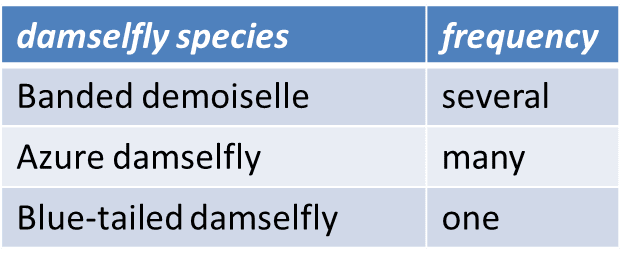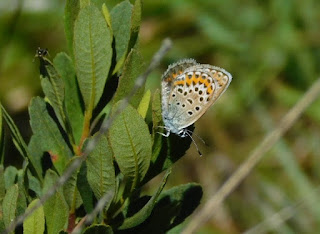We decided to spend two days along the Dorset coast, with one very clear aim in mind. If you know something about British butterflies, you probably know which species we'd be hunting. And if you don't, read on to find out!
First stop was Lulworth Cove (any idea about the target butterfly yet?).
The weather was far from conducive for butterflying: strong wind and thick cloud cover. So we didn't see a single butterfly all morning .... Until just after noon, when we found ourselves in a more sheltered area, with lots of bramble bushes and the cloud cover broke open. In no time, many gatekeepers came out to nectar on the bramble flowers, and very soon after, we indeed saw our very first Lulworth skipper!
They wouldn't settle long enough for a picture, but we saw several males and females flitting around the bramble bushes. Mission achieved!
Back near the car park, a small tortoiseshell was more accommodating.
Day two was spent at Durlston Country Park, another site that was recommended for Lulworth skippers. Plenty of flowers about, but, again, strong winds and heavy cloud cover (and the occasional rain) didn't make us very hopeful ....
Still, butterflies did make an appearance, and, like yesterday, gatekeepers were by far the most common species. Some bramble bushes really had clouds of gatekeepers around them. Also saw several marbled whites flitting over the meadows.
Although Lulworth skippers are said to fly only in full sunshine, we did see one land near us such that we could take a picture. Maybe the less-than-perfect conditions made it a bit sluggish?
And soon after that, two males buzzing around each other; one of them had clearly been in the wars ...
As we were waiting for our coffee at the terrace of the visitor centre, ready to drive home, a wall brown fluttered past; hadn't seen one for almost two years! Despite the weather, a pretty good trip: Lulworth skippers seen on both days (and with some pictures to show) and a wall brown as a little icing on the cake.
We saw six species around Lulworth Cove and ten species in Durlston Country Park; 13 species in total. The table below combines the two species lists (one = 1; few = 2-4; several = 5-9; many = 10+).








































